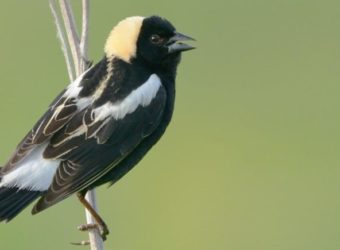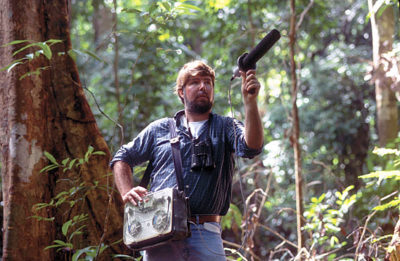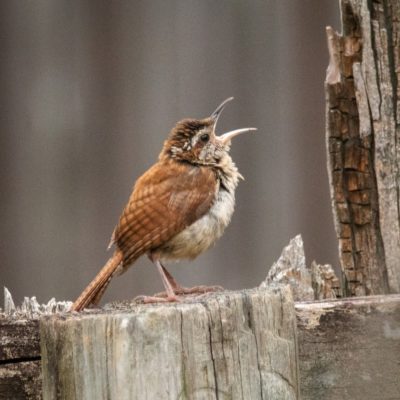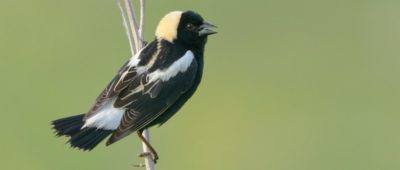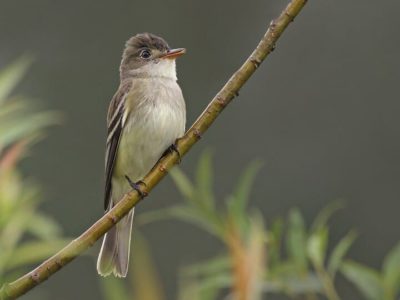Listening to Nature
Many years ago, I had the privilege of birding with Ted Parker, perhaps the single greatest field biologist ever to specialize in the birds of the American tropics. How talented was Ted at finding and identifying birds? During his much-too-short life, major universities and environmental organizations would send him—alone—into some untracked section of steamy Brazilian rainforest or forbidding Colombian mountain scrub. Weeks later he’d re-emerge, knowing exactly what birds lived there…including many species never before identified by science.
Ted’s secret: Listening. Wherever he went, before he’d even raise his binoculars, he’d stop and focus on every song and call he could hear. He was so good at it that he could recognize and ID as many as 4000 species by sound alone, most instantly.
That’s astounding, but how did it help Ted find so many species that were new to science? Because, of course, it allowed him to recognize when he didn’t know a song or call. And if he didn’t know a bird, likely no scientist did, either.
The chorus in a rainforest can be a cacophony, much of it made by the most common birds in the area. I asked Ted how he managed to hear the frequently quiet and reclusive rare and undiscovered species. He thought for a moment and then said, “Here’s how: I’ve learned to listen beyond the familiar, loud ones. Once I do that, it’s like those songs disappear, and then I can hear everything else that’s out there.”
He grinned at me. “Try it! It’s such a fun challenge.”
We all have our own definitions of fun, and for many years I was too intimidated to even try birding by ear. (After all, I’m no Ted Parker.) But in the past few years I’ve started to follow his lead.
And you know what? He was right! Birding by ear is fun. Even more importantly, it can bring you into far closer contact with with the activities of birds and other creatures, with the whole natural world, than using your eyes alone. To me, there’s something deeply moving, even beautiful, about the experience.
As Anne Swaim, SMRA’s Executive Director, says, “Tuning into the ever-changing soundscape of birds arounds us is a connection to the progression of seasons and the health of habitats. We can know when and where we are by the sounds of birds.”
That’s it exactly. When I step out of the car at Croton Point Park these days and start to listen, I immediately feel grounded both in the place and the season. Right away I hear Robins singing, Mockingbirds mocking, Song Sparrows announcing their presence seemingly from every bush and mullein stalk. All of them are proclaiming their territories, which in this season likely contain nests with eggs or young.
Once you’ve come to know those familiar sounds, though, you start to hear others. What’s that throaty chirping? The Purple Martins that live in those gourd-shaped “condos” near the park’s front gate. That hoarse, high-pitched scream? One of the Red-tailed Hawks that have been raising their young here. That odd, tinkly song (it almost sounds computerized) that rings out over the grassland hill? That’s a male Bobolink—one of the park’s special birds, here because the old landfill was turned into a grassland—defending its territory.
I could go on like this forever, but I won’t. My point is that once you hear the calls, you can find the source: Iridescent Purple Martins swooping around, a young Red-tail still begging Mama for food, the strange and gorgeous Bobolink engaging in its fluttering display flight over the grasses. Soon you recognize sound, sight, and behavior, and that allows you to start to know both the bird and the place where the bird lives.
But it gets even better. Because, just like Ted Parker, you start to hear things you don’t know, and that’s where the extra fun begins. Just recently, my familiarity with local bird songs and calls allowed me to find two species that were new to me in the park. And I began to understand the thrill Ted must have felt when he first heard—and then tracked and saw—something new.
The first time was a few weeks ago. I was up in the woods and lawns beside the model-airplane field. Baltimore Orioles, Cardinals, and ever-present American Robins were raising their usual ruckus, but then I heard something unfamiliar.
It was a loud, repetitive song that sounded like “Free Beer! Free Beer!” (That pleasing offer is how it’s often transcribed.) I knew from its tone that it was likely a flycatcher…but because I’m familiar with the calls of the park’s nesting Great Crested Flycatchers and other common species, I guessed this was something I hadn’t heard here before.
Soon enough, I caught a glimpse of the bird and figured out that it must be an Alder Flycatcher. I was nervous about this ID (flycatchers are hard!) and grateful for confirmation by some more experienced “birders by ear” who happened to be nearby. But even if I’d never been sure of my ID, it was a thrill hearing and then seeing such a special, unusual bird nearly in my own backyard.
Then, more recently, I was walking in the park near sunset when I heard a loud, harsh call coming from the phragmites marsh on its east side. Again, I noticed the sound among many others because I hadn’t heard it there before…and this time, a little bit of research let me know I was listening to a Green Heron.
I didn’t even see the bird, but I didn’t care. How cool to learn that this colorful, frequently shy little heron can call Croton Point Park home!
There are phone apps to help you identify what you’re seeing and hearing, just as there are apps for everything else. Merlin, perhaps the most famous, recently debuted a Sound ID feature, and it’s pretty impressive. Just turn on the microphone, hold up your phone, and watch the bird names appear: American Robin, Yellow Warbler, Northern Mockingbird, etc.
But there’s a risk in relying too heavily on sound apps. First of all, they can be flamboyantly wrong. Just a few days ago at Croton Point, Merlin listened to the same singing bird and alternately identified it as a Chipping Sparrow (a regular nesting species in the park) and as a Worm-eating Warbler, which would be a real rarity.
(Spoiler: It was a Chipping Sparrow.)
But inaccuracy isn’t the most important reason to use apps sparingly. To me, they miss the point, since the minute you’re using an app, you’re just staring at your phone again, letting it do the listening and thinking for you.
To my mind, that defeats the central purpose of getting out in nature, in looking and listening and—if you’re inclined to—trying to learn what it is you’re seeing and hearing. The point isn’t just about identifying things, but feeling closer to the world they and we live in. To take the opportunity to leave technology behind, just for a little while, and just be where you are. As the saying goes: Only connect—and that means with your environment, too.
I hope to see you out on the trails someday soon. I’ll be the guy with his binoculars around his neck, the one gazing into space, head a little cocked as he listens intently to something even though he’s not even wearing Air Pods.
Maybe you’ll look a little like that, too, and we can listen to nature together.
Copyright © 2022 by Joseph Wallace
